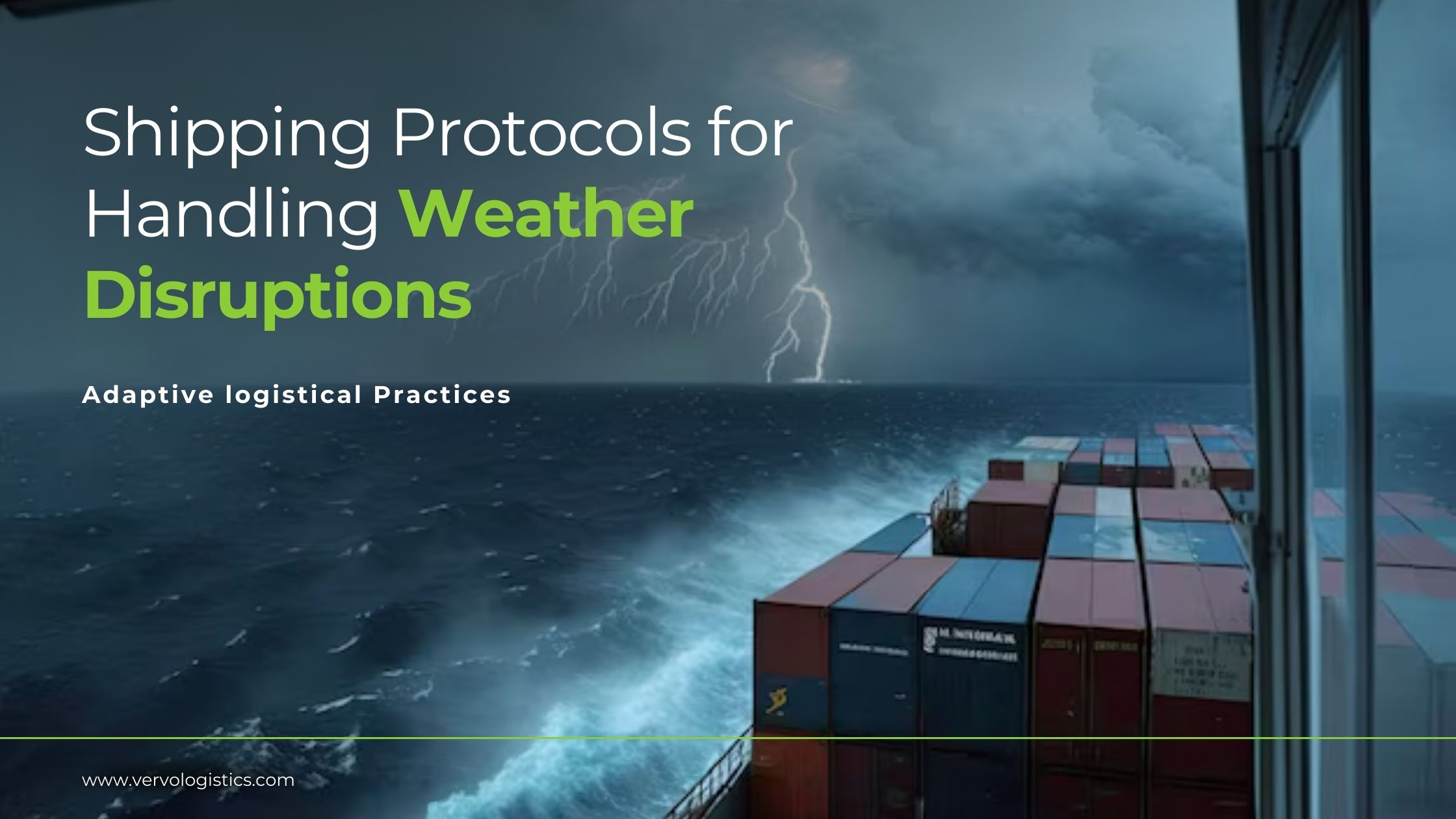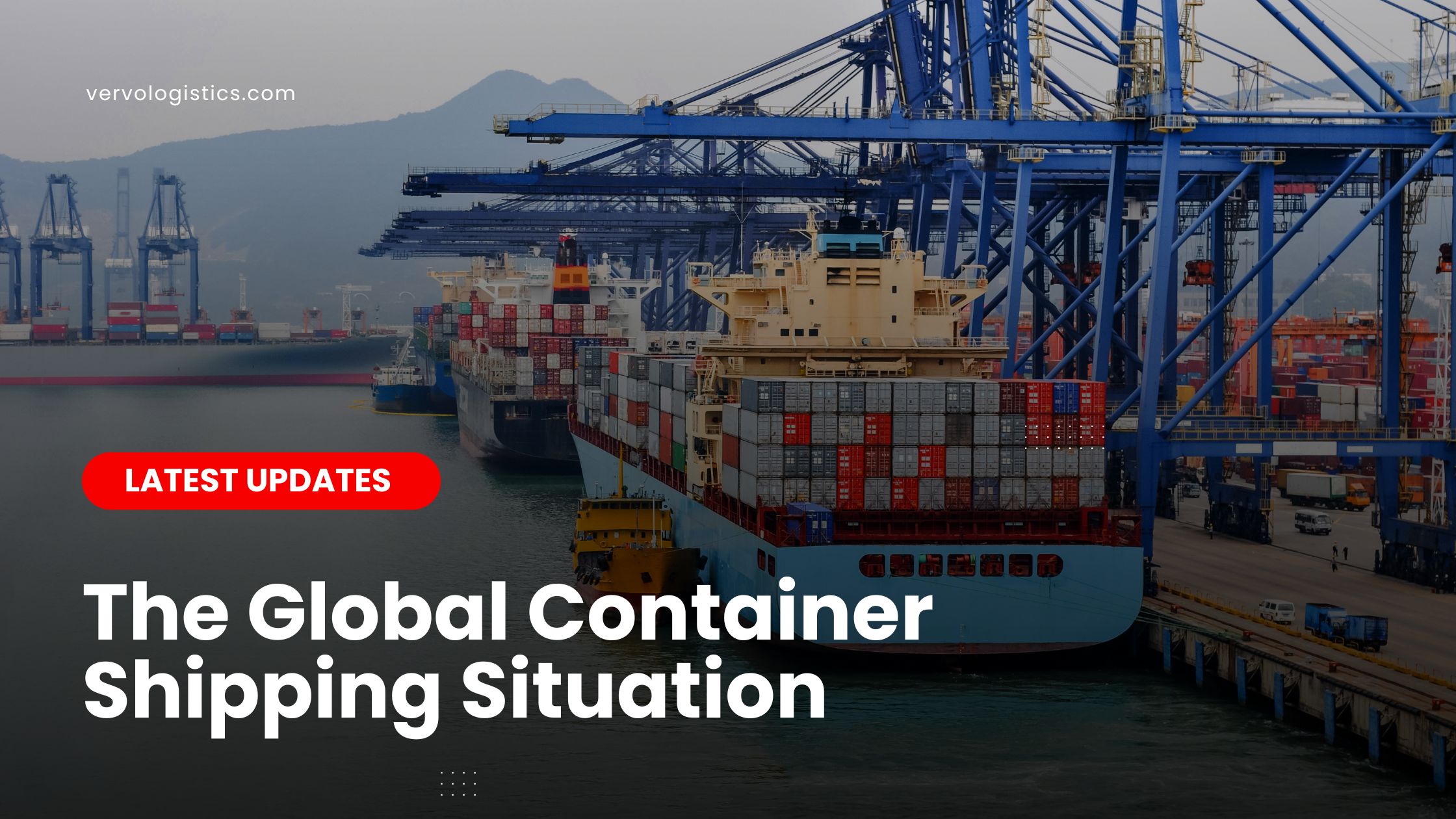In the previous 24 hours, Dubai witnessed extreme weather conditions that delayed flights and disrupted shipping schedules. So, we asked our team to provide us with a quick lookout at the best logistical protocols they follow at such events!
Cargo Types and Protocols Followed in Harsh Weather.
When planning shipments for any type of cargo, we typically choose clear days with no forecasts of harsh weather; however, should any unexpected disruptions occur, our logistics team adheres to detailed protocols according to the load, which we call adaptive cargo management. Below are the established technical protocols for handling different types of cargo—refrigerated, oversized and heavy, bulk, liquid, fragile and sensitive, and dangerous goods—during weather disruptions.
- Refrigerated Cargo
There are well-established practices for maintaining temperature-sensitive goods in transit, even in harsh weather. Refrigerated trucks and containers are equipped with telemetry systems that continuously monitor temperature, humidity, and airflow. This data links to dispatchers. If delays occur, dispatch remotely adjusts cooling units and airflow to maintain optimal conditions. Nitrogen flushing displaces damaging moisture. Carrier protocols prioritize reefers for offloading and power connections at ports. If delays exceed generator runtimes, perishables relocate to the nearest refrigerated warehouse. Contingency refrigeration, like portable generator-powered cooling units, is deployed in safe harbors if trucks are stuck, to replenish reefer fuel and batteries.
Containers and trucks travelling overseas already have redundant systems, backup generators, and fuel tanks, ensuring continuous cooling operation despite power failures from harsh weather. Stranded refrigerated containers at ports connect to on-site power. Automated monitoring continuously checks temperature and humidity. If thresholds are exceeded, remote venting can be activated to prevent load loss. Also, we set contingency plans to cover re-routings, geo-fencing and dynamic routing help us avoid severe conditions in advance. Afterwards, refrigerated cargo is inspected for temperature abuse, moisture, or thawing before release. Compromised cargo is disposed of per regular protocol.
- Oversized and Heavy Cargo:
When severe weather is forecasted, permit restrictions may be preemptively imposed, closing roads to high-profile vehicles. We then follow mandated detours and liaison with officials for approved parking locations. If high winds arise during transport, drivers immediately reduce speed, a lateral wind threshold is set that requires pulling off the road. In case of unexpected weather disruptions, we follow wait-and-delay protocols, securing cargo in protected areas until conditions improve. For extreme delays, based on the nature of the load, oversized items may be broken down into smaller pieces and transported separately to meet delivery commitments in the nearest area available.
The protocol also involves using additional securing measures, such as doubling tie-downs and employing non-slip mats or specialized friction mats that are regularly inspected and adjusted to prevent cargo movement during transit at all. Other logistical practices are the use of heavy-duty lashing systems designed to withstand additional dynamic forces during bad weather. For flooded roads, our special route survey team scout’s conditions and adjusts the re-routing accordingly.
In all cases, while planning the shipment, we follow an enhanced load distribution plan to maintain balance. Also, we choose shipments schedules during periods of anticipated mild weather. Our team pre-plans routes that minimize exposure to potential weather hazards in transit, including areas prone to flooding. Also, the ready deployment of fully equipped specialized emergency response teams is planned for in advance in case of sudden weather changes during transit.
- Bulk Cargo
Bulk cargo vessels have extensive sensor systems to monitor cargo hold conditions, hull stress, ballast tank levels, and more. This data feeds to our onshore operations center. Before departure, cargo is secured to prevent shifting. Hatch covers are reinforced, featuring water-tight gaskets and remote hydraulic sealing controls. Bilge pumps operate on backup generators if power is lost. We also double check vessel stability to ensure proper load configurations for wind/wave conditions.
In sudden weather conditions, we follow contingency handling adjustments with tracking and monitoring system in place. For dry bulk like coal, CO2 release into holds prevents cargo combustion during flooding. Thermal detectors activate automated CO2 suppression systems if hotspots occur. Derricks and cranes used to load/unload bulk cargo are secured if wind speeds exceed operation thresholds. Floating cranes are ballasted low in the water to minimize risk. If ships must divert around storms, ballasting protocols balance the ship's stability by adjusting fuel, water and cargo tanks to maintain safe handling conditions given the sea state. Cargo operations are suspended if winds exceed 60 knots or waves exceed 12 feet. For weather-sensitive bulk materials like grains or minerals, we adjust ventilation systems to manage air flow and reduce condensation build-up, preventing spoilage or quality degradation.
For liquid bulk like oil or chemicals, inert gas generator systems maintain vapor control in cargo tanks. This prevents combustion or compounding chemical interactions. Emergency transfer protocols allow pumping hazardous liquid bulk to temporary holding tanks or reserve ships if tank integrity is compromised during the weather event. The logistical protocol also includes identifying and utilizing alternate storage facilities that are strategically located away from high-risk weather zones. Other technical practices involve utilizing compartmentalized holds in bulk carriers, which can be individually sealed to prevent shift and contamination during transit, especially in choppy waters. After delays, cargo may be redistributed, or vessels restricted to minimal sail routes until inspections confirm all bulk cargo remains fully secured after the disruption.
- Fragile/Sensitive Cargo
Based on weather forecasting, we select specialized equipment like climate-controlled, shock-absorbing, and waterproof containers to transport fragile goods. In all cases, packaging protocols include water-activated encasements and desiccants besides anti-vibration packaging solutions, using polyethylene foams and air cushion packaging. Shipments are monitored in real-time using shock, tilt, temperature, humidity sensors in the cargo area. This data alerts us of any mishandling or environmental changes. Contour mapping of routes identifies road segments likely to cause turbulence, allowing drivers to reduce speeds proactively. Our system predicts areas of concern based on weather data.
In sudden weather events, we redirect shipments around storm paths when possible. Protective cases and restraints we deploy help shield cargo from jostling. In case of severe turbulence, remote condition indicators trigger pull-off procedures. Some commercial trucks are already equipped with suspension systems, stability controls, and gentler braking modulation to minimize shock forces. The goal is to minimize vibrations and shocks during loading, unloading, and transit under adverse weather conditions. We recommend the implementation of expedited shipping options to minimize the probability of weather damage. After the weather event, inspectors thoroughly evaluate cargo for any evidence of damage before release. Impact-detection dye capsules visually indicate any mishandling.
- Dangerous Goods
If high winds, flash flooding or tornado risks arise, drivers must immediately locate and pull into the closest approved safe harbor location. These are pre-identified parking and docking areas that have been evaluated by experts for dangerous goods staging during emergencies. Drivers activate remote telemetry systems that provide real-time shipment locations and hazard sensor readings to the central dispatch team. This allows remote monitoring of any leaks, spikes in temperature/pressure, or container breaches.
Remote sensors also initiate automatic mechanisms such as pressurization systems, cooling vents, stabilization equipment, and more, depending on the goods being transported. For example, liquid nitrogen sensors can trigger cryogenic release valves to prevent dangerous pressure buildup. If goods are compromised in transit, certified hazmat spill response protocols are followed. Drivers have PPE, containment, and mitigation equipment specific to each hazard class, from flammable absorbent pigs to chemical neutralizing agents and radioactive waste barrels.
The transport company immediately notifies regulatory agencies of any unauthorized dangerous good release or exposure incidents. Post-event investigations are conducted, and protocols updated to improve future response. Once conditions allow, transport is resumed using pre-planned alternate routes. Delays and remaining distance may require shift changes or pilot convoys to escort dangerous goods shipments.
Planning safe logistics services with Vervo Middle East.
At Vervo Middle East, we thoroughly plan for every detail and prepare for back-up plans in case of emergencies. Regardless of the cargo type, we always recommend having an appropriate and comprehensive cargo insurance plan in place to protect the value of your load. What we have explained are merely adaptive cargo management protocols. Our team, however, follows other procedures that are more general to the whole supply chain operation, such as inventory buffering practices and delay management. In the end, we hope that everyone is well and that the weather conditions improve in Dubai. Remember to reach out to our team via



 by vervo middle east for shipping and logisitcs services in the uae and ksa shipping company logistics solutions cargo services.jpg)
